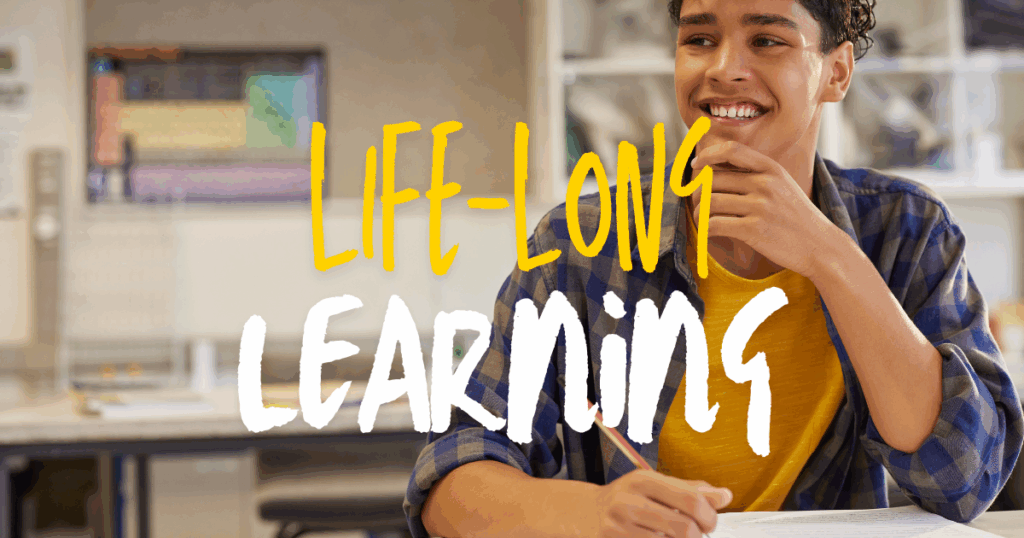It’s a scene every parent and teacher knows all to well: the wide-eyed wonder of a five-year-old, whose world is a boundless playground of questions. Their curiosity is a powerful, unquenchable fire. But fast forward a few years, and that same child, now a teenager, often sees school not as an adventure, but as a chore. The questions have stopped, replaced by sighs and the dreaded phrase, “When am I ever going to use this?”
As an educator with 35 years of experience, I have witnessed this transformation countless times. It’s a heartbreaking shift that leaves us all wondering: what happens in those crucial years to extinguish that beautiful spark? What are the some of the things that steal a child’s natural passion for learning? And more importantly, what can we as parents do to protect and nurture it?
This isn’t about blaming the schools, technology, or the kids. It’s about understanding the subtle, yet profound, changes that occur as children navigate a new world of pressure, social dynamics, and rigid expectations. Let’s explore these seven passion-killers, and more importantly, discover practical interventions you can use to help your child’s love of learning not only survive but thrive.
1. Increased pressure and performance anxiety
Early on, learning is its own reward. Our 5-year-olds learn to tie their shoes, and they feel a sense of accomplishment. By age 14, that sense of accomplishment is often tied to external validation: a high score on a test, a good grade, or a ranking in a class. This shift from intrinsic to extrinsic motivation can be incredibly damaging. As the stakes get higher — standardized tests, college applications, and class rankings — the fear of failure can become a powerful deterrent. This can lead to students avoiding challenging subjects or creative projects, stifling their curiosity in favor of a safer path that guarantees a good grade.
- Shift the focus from grades to growth
Instead of fixating on report card grades, help your little one keep focus on the process of learning. When your child brings home a test, ask about a concept they found challenging or something they learned. For example, instead of, “What grade did you get on your history test?” try asking, “What was the most interesting fact you learned about that historical period?” This helps them internalize that learning is about personal development, not just external validation. Use a growth mindset approach by praising effort and perseverance. For instance, “I’m so impressed with how hard you worked to understand that math problem” is more powerful than “You’re so smart at math.” This teaches them that their abilities can be developed through dedication and hard work.
2. Emphasis on rote memorization
Rote learning is the practice of memorizing facts without understanding their context. It has its place for things like multiplication tables or state capitals. However, when it becomes the primary mode of learning, it strips away the deeper, more meaningful connections that make a subject interesting. A student might be able to memorize the dates of a historical battle, but still have no understanding of the underlying causes, the human impact, or its relevance today. This can make subjects feel dry and irrelevant, leading to a sense of, “Why do I need to know this?”
- Connect learning to the real world
Help your child see the relevance of what they’re learning by connecting school subjects to everyday life. If they’re learning fractions, have them help you measure ingredients while baking a cake. If they’re studying a historical period, watch a documentary or visit a local museum. Maybe when you go on vacation, you can include some of these historical locations into your itinerary. You can also leverage their interests. If they love baseball, they can use math to calculate player stats. This makes learning feel less like an abstract task and more like a tool for understanding their world.
3. Social and peer pressure
The social landscape of middle school and the early teenage years is a minefield. What’s considered “cool” can often be at odds with academic excellence. A student who genuinely loves science or literature may feel pressure to hide their passion to fit in. They might intentionally underperform or act apathetic to avoid being labeled a “nerd.” The desire to belong and be liked by peers is a powerful developmental need, and it can, unfortunately, override a child’s natural intellectual curiosity.
- Foster a “growth mindset”
A growth mindset is the belief that intelligence and abilities can be developed through dedication and hard work. A fixed mindset is the belief that these qualities are innate and unchangeable. You can help your child develop a growth mindset by using specific, positive feedback that focuses on effort and strategy. Avoid generic praise, such as, “You’re a genius!” which can lead to a fear of failure. Instead, say things like, “I saw you really struggle with that, but you stuck with it until you figured it out. That’s fantastic!” This teaches them that challenges are opportunities for growth, not a reflection of their intelligence.
4. Over-scheduling and Lack of Downtime
The modern child’s schedule is often a packed list of school, sports, music lessons, tutoring, and other extracurriculars. While these activities can be beneficial, they can also leave little to no time for unstructured play and boredom. Boredom is a crucial ingredient for creativity and self-discovery. When a child has an empty afternoon, they are forced to use their imagination and seek their own interests. A constantly scheduled child, however, learns to be constantly entertained, and they may lose the ability to find intrinsic motivation for learning and exploration.
- Protect Unstructured Time
In today’s over-scheduled world, downtime is a rarity. Make sure your child has ample time for free play, daydreaming, and unstructured activities. This is where they can explore their own interests without an agenda, leading to self-discovery and creativity. Boredom is not a problem to be solved with an iPad; it’s an opportunity for your child to use their imagination and develop their own passions. Encourage activities like building with blocks, drawing, or exploring the backyard without a specific goal.
5. Disconnection from real-world application
Teenagers are starting to think more abstractly and critically, and they want to understand the “why” behind what they’re learning. When a teacher presents a complex mathematical formula or a historical event without connecting it to the real world, students are left feeling that the information is useless. The question, “When am I ever going to use this?” is not a sign of disrespect, but a genuine desire for relevance. This is particularly true for subjects like math and science, where the real-world applications are often not immediately obvious.
- Model curiosity yourself
Children learn by watching their parents. Demonstrate that learning is a lifelong adventure by being a curious learner yourself. Read books, listen to podcasts, watch documentaries, and be open to learning new things. When you encounter a question, you don’t know the answer to, research it together. For example, if you see a strange bird in the backyard, look it up in a bird book or on a website together. This shows your child that learning is a fun and continuous process, not just a school requirement.
6. Fear of making mistakes
In kindergarten, making a mistake is often celebrated as a step in the learning process. By middle school, mistakes can have real consequences, from a low grade on a test to public correction in front of peers. This can foster a fear of failure that leads to perfectionism and risk-avoidance. A child may become so afraid of being wrong that they stop asking questions, stop volunteering answers, and stick to what they know, preventing them from pushing their intellectual boundaries and truly learning.
- Create a “mistake-friendly” environment
Reframe mistakes as essential parts of the learning process. Share stories of your own failures and what you learned from them. When your child makes a mistake, don’t react with disappointment. Instead, ask, “What did you learn from that? What will you do differently next time?” This helps them see that mistakes are not a sign of failure but a signal that they are taking risks and learning. Encourage them to see challenges as a chance to grow.
7. The rise of digital distractions
The constant availability of smartphones, social media, and video games has a profound impact on attention spans. These technologies are designed to be addictive, providing a continuous stream of instant gratification. Schoolwork requires sustained focus and delayed gratification, which is difficult to compete with. As a result, students may struggle to concentrate on a long-term project or a complex reading, as their brains have become accustomed to the rapid-fire dopamine hits of a new notification or a new video.
- Prioritize communication
Open communication is key. Move beyond simple questions such as, “How was school?” and ask more specific, open-ended questions that encourage a real conversation. For example, “What was the most surprising thing you learned today?” or “Tell me about a time you felt proud of yourself at school.” Make time for one-on-one conversations where you can listen without judgment. This helps you stay in tune with their emotional and academic life, allowing you to catch problems early.
The transition from a curious 5-year-old to a disengaged 14-year-old is a journey many parents witness with a heavy heart. But it’s not a path set in stone. The natural wonder and curiosity that lives within every child is not gone; it’s simply buried under layers of pressure, rote memorization, and a lack of real-world connection. We, as parents and educators, have the power to unearth that passion once more.
By shifting our focus from grades to genuine growth, giving our children the autonomy to explore their interests, and connecting what they learn in school to their daily lives, we can rekindle that spark. Let’s create a mistake-friendly environment where learning is an adventure, not a competition. Let’s protect their time to be bored, model curiosity ourselves, and, most importantly, talk to them openly about their experiences. The love of learning is not just about school; it’s a lifelong gift. With our mindful guidance, we can ensure that this gift continues to grow and flourish in our children for years to come.

